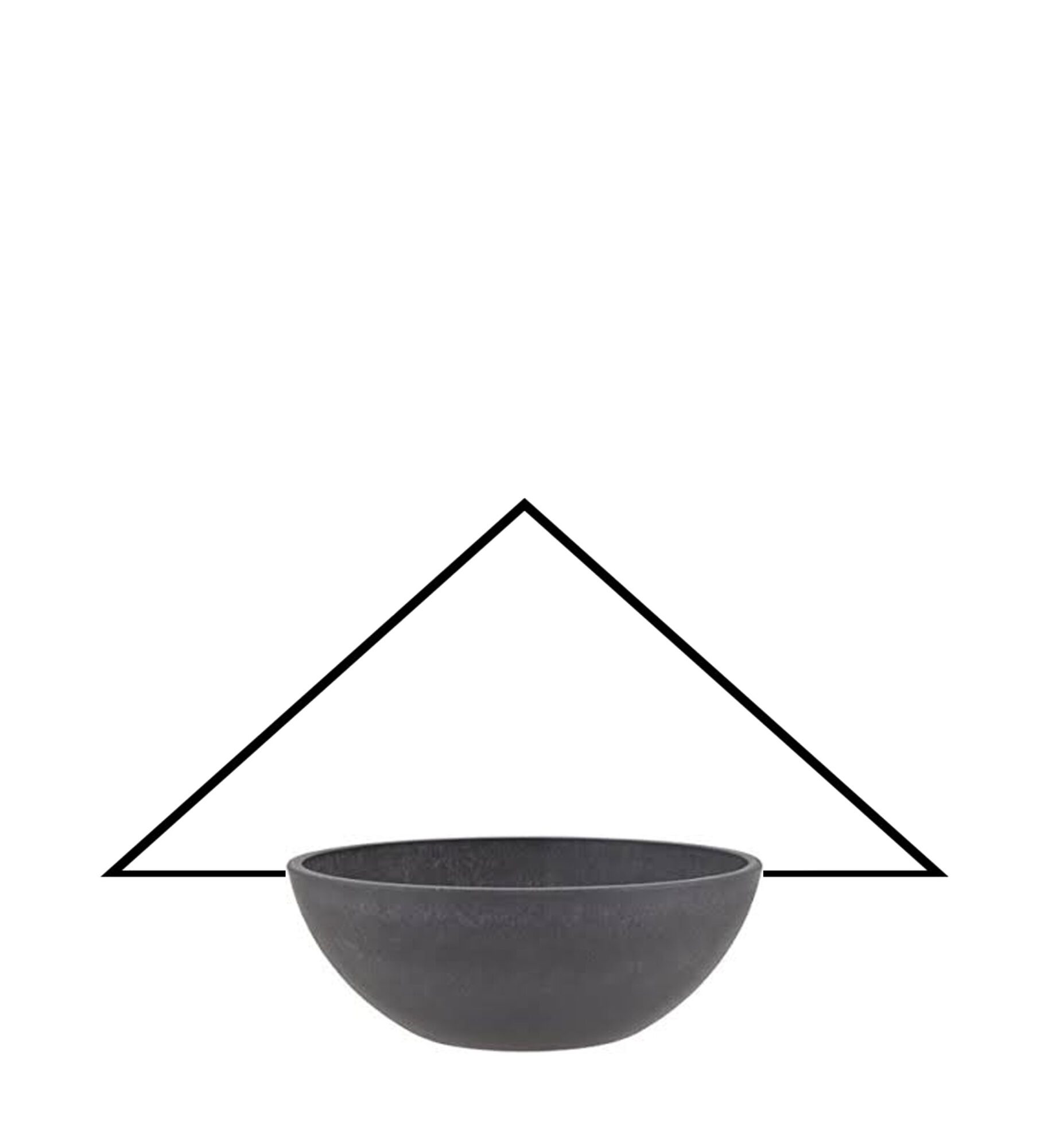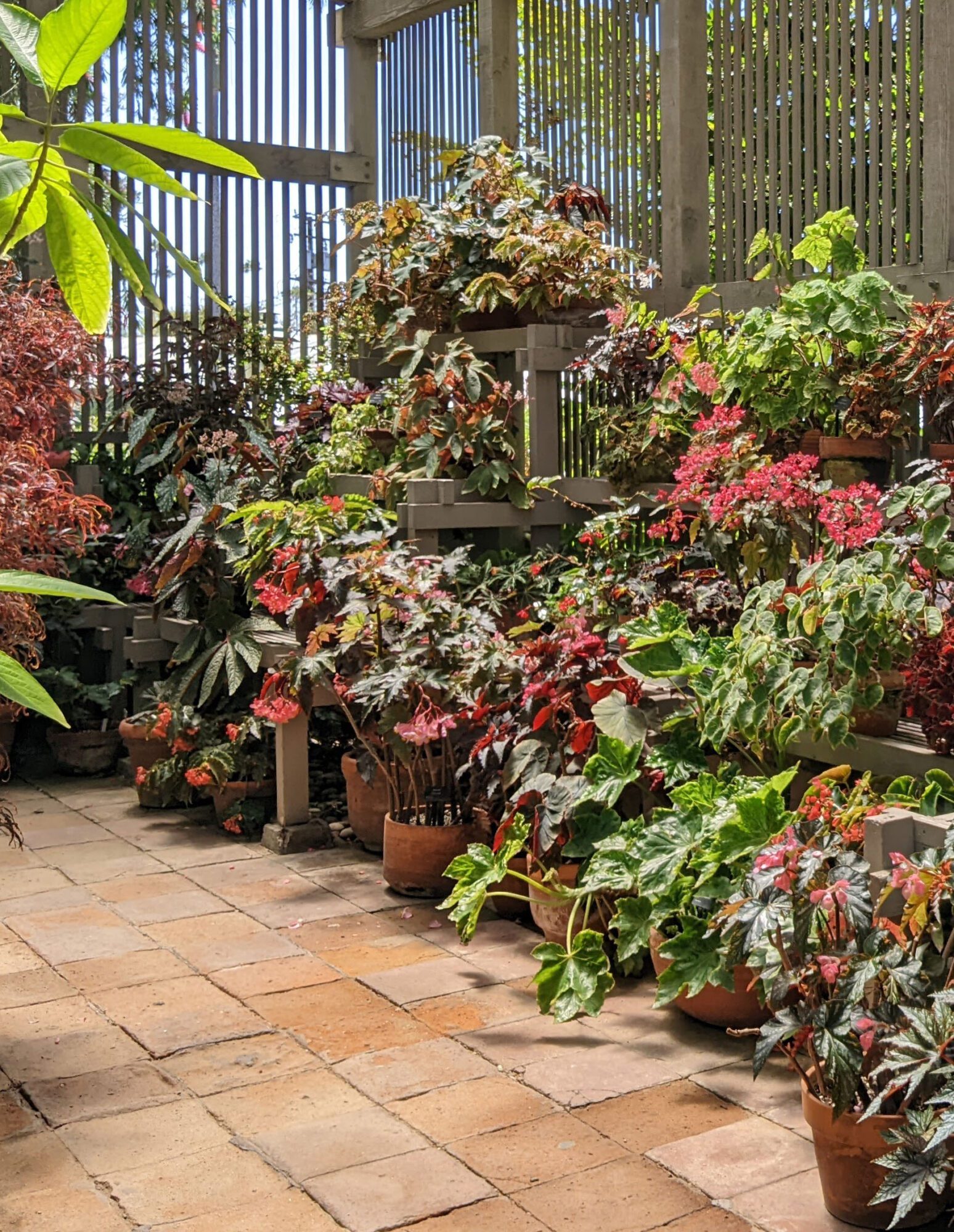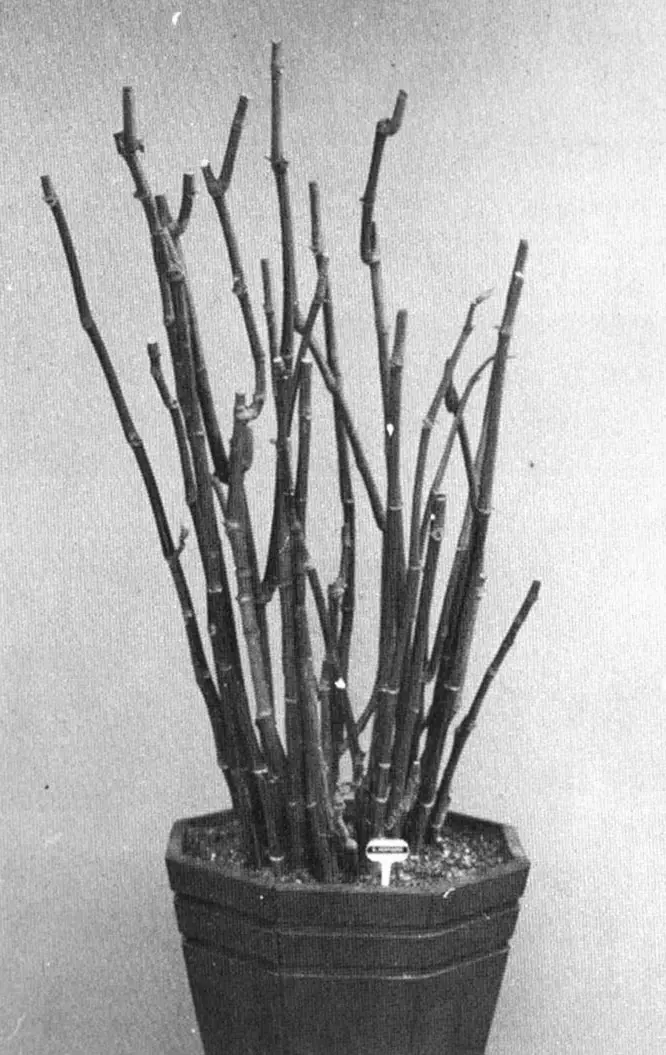Maintaining a healthy Begonia collection requires regular pruning to keep plants healthy and looking their best.
When to prune:
In northern climates most people prune in fall when they bring their plants indoors, but mostly this is a space saving decision and is not best for the plant. Fall pruning may weaken the plant just as it is going into dormancy and could use those leaves and stems to help it survive over the winter. Sometimes, though, it is not possible to do things any other way.
In low frost areas such as Florida, Texas, and southern California, pruning is usually done in early spring after dormancy has passed and as the plants begin growth for the upcoming year. In this way, the removal of old stems helps to stimulate strong new growth just as stems begin to leaf out.
A general rule of thumb is that you want to prune and pinch BEFORE your plants are flowering in late spring through summer. After all, you don’t want to cut off those flowers!
How to prune:
The difference between pinching and pruning.

A pinch is more refined than pruning. It means just removing the very tip of a stem and is to encourage branching in a stem, but not to impact the shape of plant in a major way.| Photo by Gene Daniels, the Begonian 1972

Pruning is done to make major changes in the shape of a plant and to remove old, less vigorous stems. Stems over 2-3 years old begin to decline and newly emerging canes are more vigorous, so check to see if there is “old wood” to be removed.
Plan first for the overall shape you want.
Before you begin pruning, step back and look at the plant. Think about the general shape you are trying for, try to see where that is and remember to come back and check again as you work. It is easy to drift off target unless you stop now and then to check your progress. For most people the triangular shape is easiest to imagine, in the pictures below you see how a taller pot looks more balanced with a taller plant in it, and a shallow bowl looks better with a wider, squatter overall shape. You would make your initial pruning cuts to fit your plant within the triangular outline. Remember to walk around the plant and view it from all sides.

Shallow pots look best with squatter, more mounding, plants.
Clean tools, clean plants.
Keeping your pruning tools clean will help avoid spreading diseases and fungi on the blade of the pruners. Sharpening your pruning tool is equally important. Most pruners are designed to work like scissors with the top sharp cutting edge passing the bottom edge and severing the stem. Sharp pruners do the least damage to stems and dull pruners not only harbor more chances for disease, but they also tend to smash the stems rather slicing them cleanly which is what you want.
Where to prune:
Old school advice was to cut the whole plant back at one time, cutting all stems down to 2-3 nodes (on each stem) above ground, but this no longer recommended since it can be too much for the plant to recover from. Generally, it is now recommended to leave more of healthy older branches and give the plant a bit of time to recover/grow.
B. ‘Kentwood’, an Irene Nuss hybrid, known for being a very vigorous and large cultivar, receives a strong pruning in spring.
When cutting the stem, you want to remove the upper portion of the stem and leave a swollen, growing bud at the top of the remaining stem. Make your cuts about ¼-½” above that viable bud. You also want to look for buds that face outwards, from the center of the plant. That way when they grow, they are not facing into other stems, or the center of the plant where they will be crammed into other stems.
Cut off long stems at the top of the plant and stick the cut stems in, to root, at the bottom of the plant. The additional stems will help to fill out pots and avoid spindly looking plants.
Pruning for show versus pruning to shape.
Pruning for show is quite different than pruning ‘to shape’ in your garden or collection of pots. When pruning for show the goal is usually a symmetrical and evenly balanced plant, that can be viewed from all sides. If you are pruning for show, remember good pruning starts as much as a year or two before you bring the plant to show. It takes that long in some cases to get really perfect structure.
When you prune at home, sometimes you want a plant that is taller that it is wide or leans a certain way to make an archway. Often at home we are less concerned with symmetry and more with concerned with how the plant fills a space in our garden. Keep in mind that you may want one thing in your garden, but the judges may want something different in a show plant.
Remember, this is supposed to be fun!
Many people view pruning as stressful, as though they were hurting their plants, when in truth it is a great to revitalize them! In truth pruning is one the most Zen, relaxing aspects of gardening, remember to stop, breath, and enjoy yourself while you are shaping a plant for the upcoming year!










